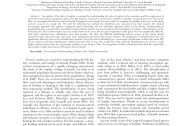Content
An analysis of the diets of reptiles is essential for understanding the role of reptiles in the ecosystem and the employment of successful conservation management plans. For this purpose, noninvasive and invasive methods to identify consumed prey have been used. Here, we investigated the diet of male and female European Green Lizards (Lacerta viridis) by sampling fecal pellets across 2 yr in the spring and late summer at a single site. We used the following two methods for identifying prey remnants from fecal samples: the classical macroscopic approach that requires competent expert knowledge and the molecular approach based on the dietary metabarcoding of nondegraded prey remnant DNA. According to both methods, lizards consumed mainly insects belonging to 13 orders, with Coleoptera as the dominant prey. The number of prey taxa was similar between the sexes, but the prey composition at the genus level was significantly different, with males capturing some coleopterans more than females. The diets also differed significantly between season. In the spring, lizards consumed many more prey types and many more coleopteran specimens than in late summer. The proportion of identified prey taxa was significantly different between the identification methods. From the total of identified prey, macroscopic identification yielded only about 50% of taxa, whereas molecular identification yielded more than 80% of taxa. Our results show that molecular identification can recover a much higher number of prey than the macroscopic method, yet not all prey. Thus, the integration of both methods best described the natural diet and complex trophic interactions of European Green Lizards.



